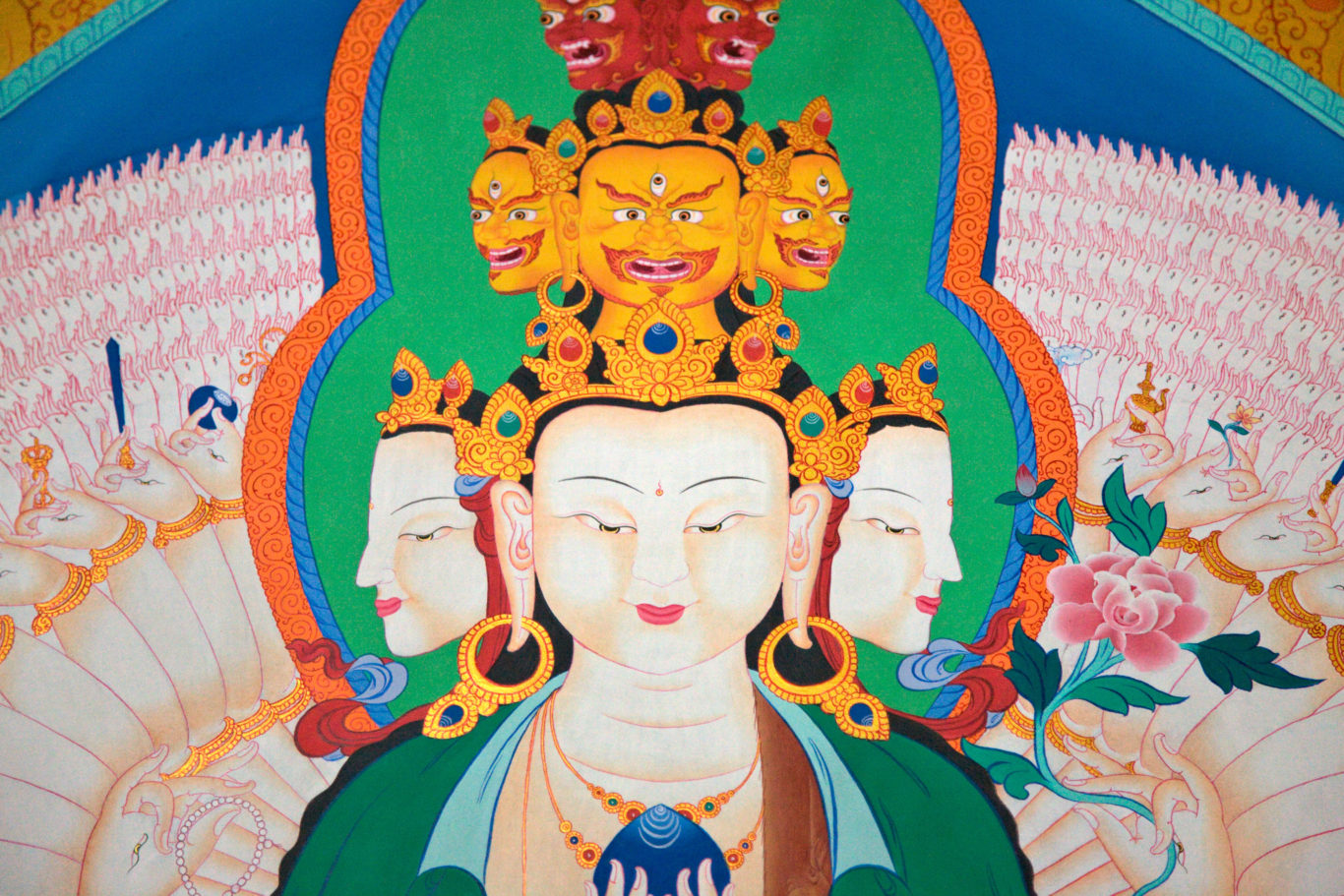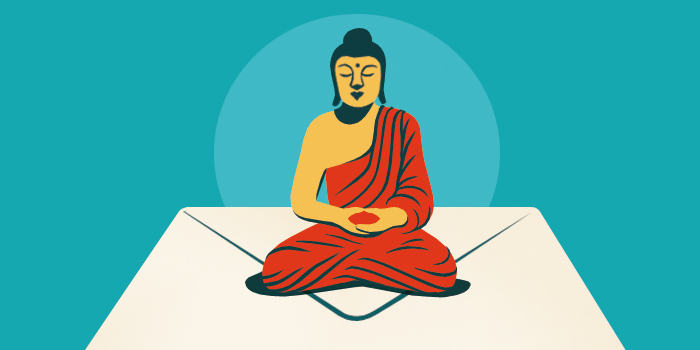Visualization meditation

Detailed renditions of enlightened figures like this one of Avalokiteshvara (Skt.), the bodhisattva of compassion, are often used as supports for visualization practices. | Craig Lovell / Eagle Visions Photography / Alamy Stock Photo
In a broad sense, any time you imagine something—from what you’ll be cooking for dinner to the details of your dream vacation—you’re visualizing. In Buddhism, the mind’s ability to produce a mental image may be harnessed for the purpose of developing qualities such as compassion, focus, or devotion, or connection with a desired avenue of rebirth.
Visualizations can be straightforward and calming or elaborate and stimulating, according to the Buddhist tradition and intention. For example, practitioners may seek inspiration by imagining the benevolent, radiant presence of the Buddha; they may develop compassion by imagining beings in distress and sending them well-wishes and relief; or they might look to quell their sensual appetite by imagining an object of desire as flesh, bones, and organs stripped of the skin. Depending on the intention, visualization practices run the gamut from glorious to gory!
In certain Buddhist schools, the mind’s natural creativity is channeled so as to help practitioners break free of the confines of ordinary perception. In Tibetan Buddhism, visualization practices follow precise guidelines and are generally associated with specific practice-related commitments. Tibetan Buddhism’s elaborate symbolism and iconography—images of meditation deities and otherworldly scenes—are designed as an interface with a deeper dimension of reality, presented in a form that meditators can relate to and practice with. The dynamic visualization phase of such practices is always followed by a phase of simply sitting in open awareness.

Tricycle is more than a magazine
Gain access to the best in sprititual film, our growing collection of e-books, and monthly talks, plus our 25-year archive
Subscribe now